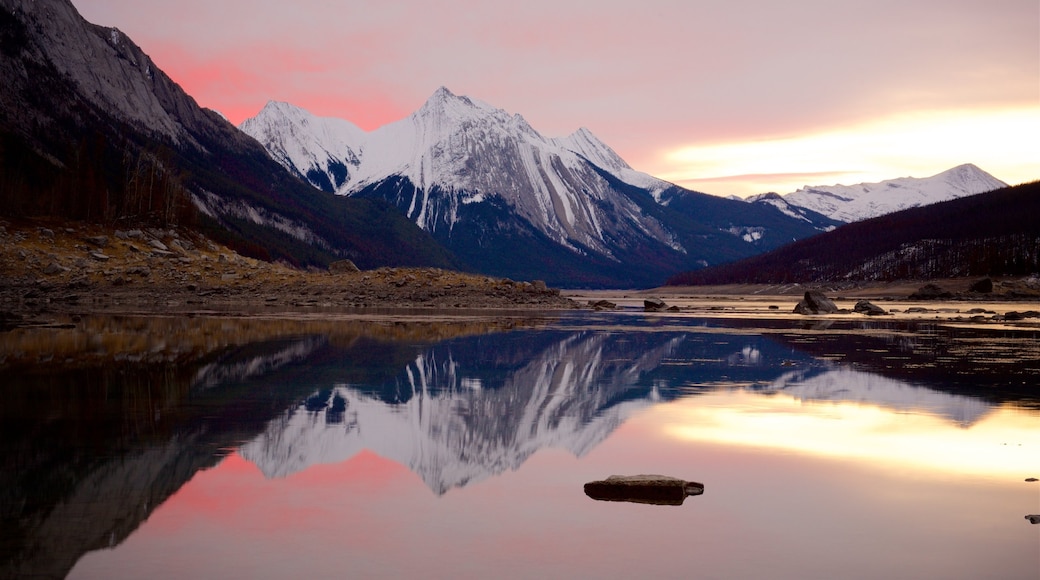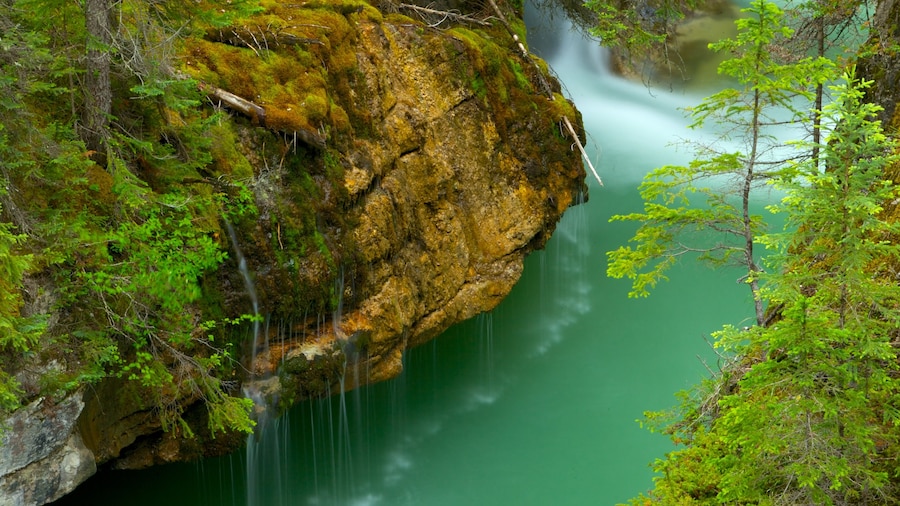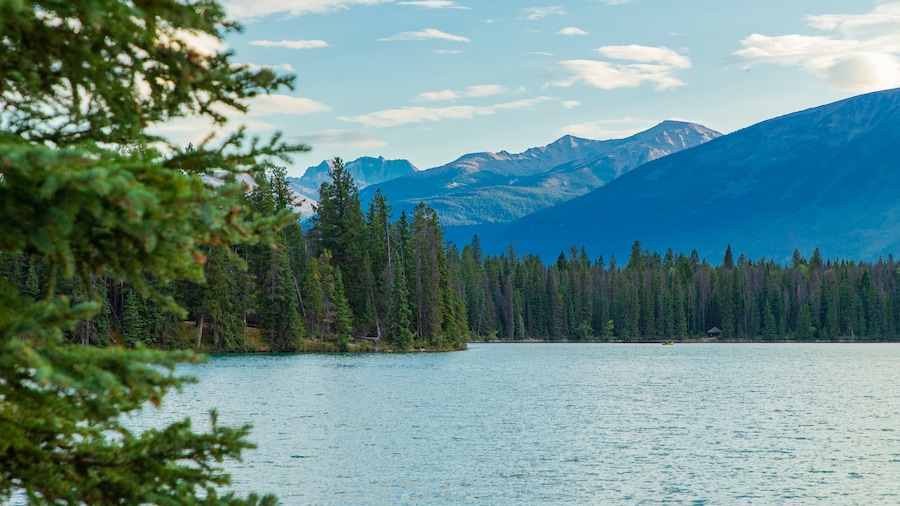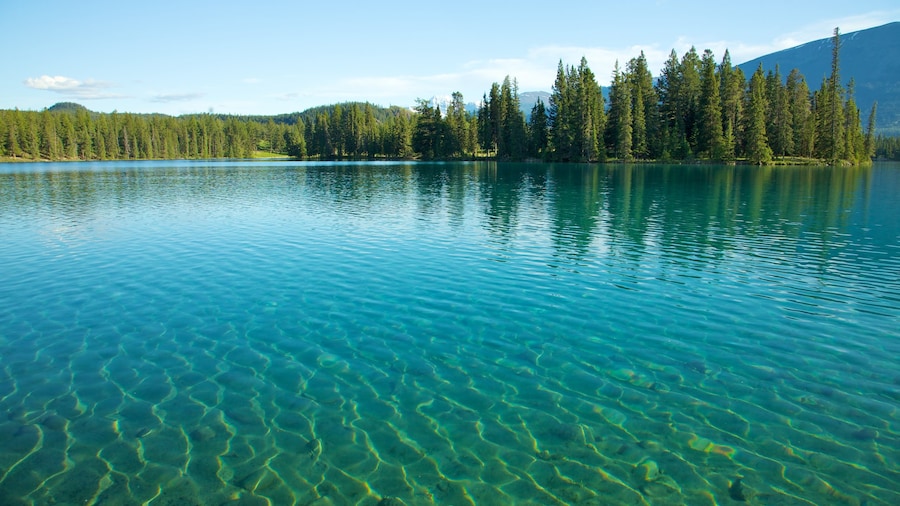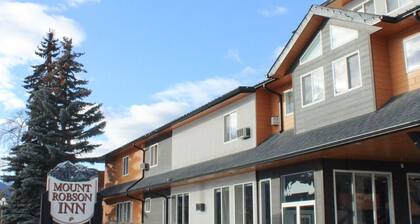If you’ve witnessed the flow of water in Maligne Canyon, a visit to Medicine Lake is a must, because this is where it all goes. Well, this is where it is supposed to go at least. When autumn starts, the body of water disappears and leaves a mere trickle. This phenomenon has mystified people for thousands of years. Medicine Lake earned its name from the Native Indians who believed its ebb and flow was magical, like medicine.
In an attempt to understand the flow of water, or the lack thereof, you can look at where the water originates. Located 9 miles (16 kilometers) upstream from the canyon, picturesque Maligne Lake spills into the Maligne River. In summer, glacier melt water cuts through Maligne Canyon and reaches Medicine Lake, to the point of overflowing. Even now, experts are unsure where the water disappears to. What is known is that it likely has one of the most extensive, and inaccessible, underground cave systems in the world with hidden sinkholes. Technically, Medicine Lake is not a lake at all: It is a sinking river!
In summer, the fishing on Medicine Lake is excellent. Rainbow and brook trout populate the waters. Rent a boat to get out on the water. If you’d rather photograph the wildlife than eat it, keep an eye out for the likes of bears, caribous, wolves, and moose. Birds of prey are often seen swooping down on the lake to capture fish.
For those looking to stay a while longer, Medicine Lake Provincial Recreation Area has over 40 campgrounds open in the warmer months. Some are located near the water’s edge. If you want the experience of cooking the day’s catch under the aspen and spruce trees, there is no better place to do it.
Medicine Lake is located about 12 miles (20 kilometers) southeast of Jasper, along the scenic Icefields Parkway. While the views and activities are better in summer, it is a fascinating site to see any time of year.
